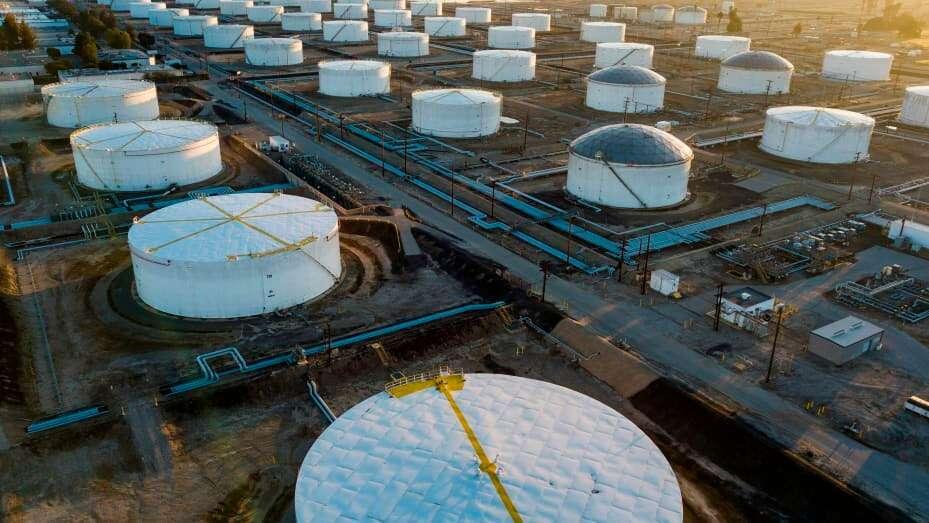Africa-Press – Angola. The volume of Liquefied Natural Gas (LNG), Liquefied Petroleum Gas (LPG) and Condensates exported in the first quarter of this year reached 966,394 metric tons, which confirms the potential of the national industry.
Revenue was 393.6 million dollars, an increase of 0.55 percent in the 4th quarter of 2023, a period in which 961,153 metric tons were exported.
These data are contained in a report from the Ministry of Mineral Resources, Oil and Gas presented, on Thursday, in Luanda, during the general balance of Crude Oil and Gas exports, in the first quarter of 2024. Compared to exports in the first quarter of 2023, there was a decrease of 15.78 percent, in which 1,147,500 metric tons were exported.
During the period under analysis, 750,287 metric tons of LNG were exported at an average price of 417,895 dollars, Butane with 220.52 metric tons, at an average price of 624,238 dollars, Propane with 181,941 thousand metric tons, at an average price of 337,488 dollars and Condensates with 33,946 thousand metric tons, at an average price of 545,544 dollars.
The report indicates that LNG was mainly exported to India with 54.65 percent, Italy (18.06%), Thailand (9.37%), the Netherlands (9.04%) and the United Kingdom (8. 88%). Propane was exported to the United States at 11.40 percent, China (11.23%) and Portugal (5.05%) and Butane Gas was exported to Namibia.
Oil production
The volume of Crude Oil production exported in the first quarter of this year, valued at 94.4 million barrels, the National Petroleum, Gas and Biofuels Agency (ANPG) contributed 26.66 percent, Sonangol (15.78) , Azule Energy (16.25), TotalEnergies (11.68), SSI (7.01), Esso (6.99), Cabgoc (6.99) and Equinor (5.99). These data are contained in a report from the Ministry of Mineral Resources, Oil and Gas (MIREMPET) presented yesterday in Luanda, during the general assessment of Crude Oil and Gas exports, in the first quarter of 2024.
The report also indicates that Galp Energia contributed with 2 percent, Etu Energia with 0.63 percent and Acrep with 0.02 percent, in which the main Angolan varieties sold in this period were Dália with 12, 53 percent, Mostarda (12.09), Nemba (9.10), Paz Flor (7.19) and Cabinda (7.19). The report states that, during the first quarter of this year, in which the country raised 7.8 billion dollars, with exports of 94.4 million barrels of Crude Oil, the commercialization of Sango crude oil also stands out. with 5.14 percent, Kissanje (6.02), Girassol (6.40), Clov (6.82) and Plutónio (6.50).
During the period under analysis, the prices of Angolan raw materials had an increasing trend, with the quarterly average being US$82.295 per barrel, with Brent Datado standing at US$83.161/barrel. The highest average export price was of US$85,226 per barrel, recorded in the Girassol branch, and the lowest was US$79,716/barrel, recorded in the Hungo branch.
Recorded increase in oil prices
The MIREMPET report indicates that OPEC+’s intention to extend production cuts until the second quarter of 2024 was one of the factors that contributed to the increase in the price of oil on the international market.
Continuing geopolitical tensions in the Middle East and the armed conflict between Russia and Ukraine, as well as attacks on Huthi rebel positions by the US also contributed to the rise in price.
The report states that the decrease in Libyan production resulting from the shutdown in the Sharara field and the interruption of US production due to the colder winter, the reduction in crude oil exports from Iraq and Saudi Arabia, as well as the optimistic outlook for OPEC and other international agencies in demand for crude oil also contributed to the increase in the price of oil.
Price decrease
The document indicates that concerns about the weak economic performance of the Eurozone and China, as well as the appreciation of the US dollar and the postponement of interest rate cuts by the US Federal Reserve (FED), were one of the factors that contributed to the decrease in the price of oil.
The report states that the increase in production by the USA, OPEC and non-OPEC+ producers, as well as the increase in crude oil and gasoline stocks in the USA, and the drop in demand for gasoline were also at the basis of fall in the price of crude.
For More News And Analysis About Angola Follow Africa-Press






